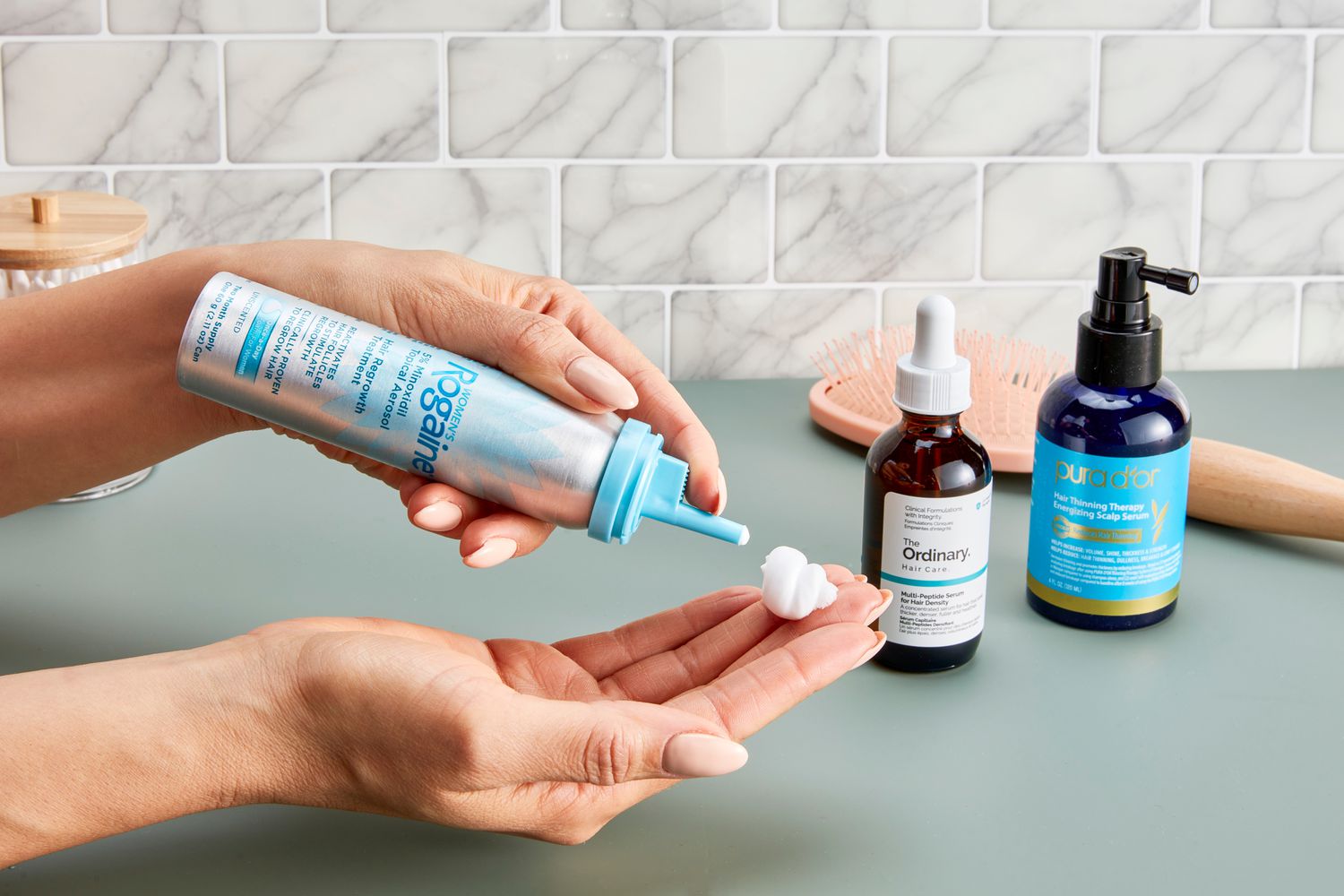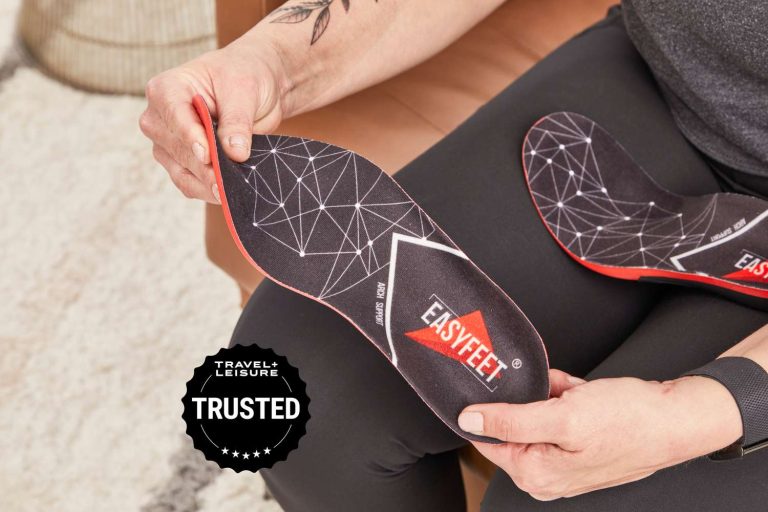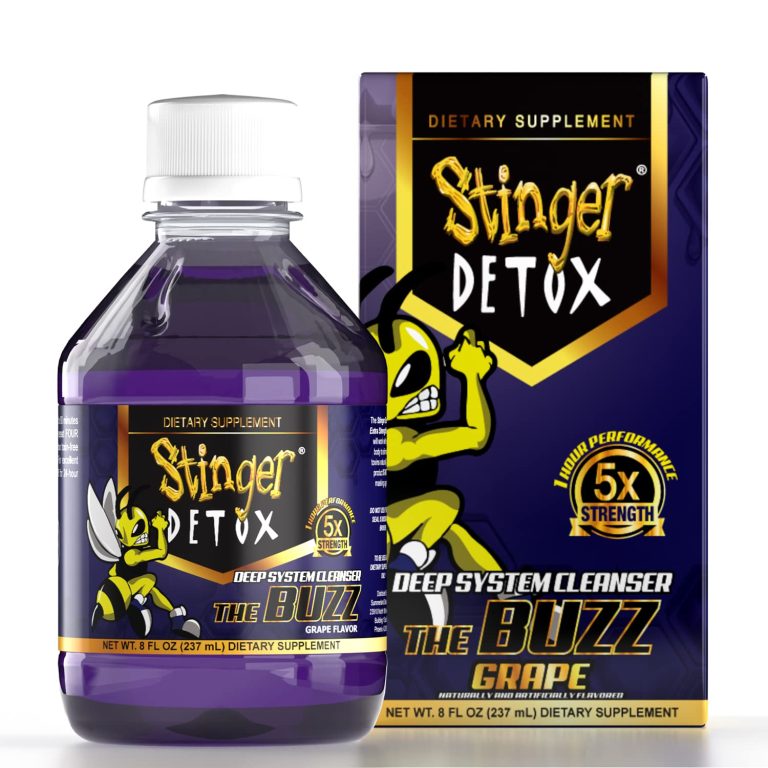9 Best Hair Regrowth Solutions for Men: Effective Treatments and Natural Alternatives
Struggling with hair loss can be frustrating and impact your confidence. You’re not alone—millions of men face this issue daily. The good news? There’s a range of effective hair regrowth treatments available that can help you regain your crowning glory.
From topical solutions to oral medications and innovative technologies, the options are vast and varied. We’ve curated a list of the 9 best hair regrowth treatments for men to guide you on your journey to thicker, healthier hair. Dive in to discover which solution suits your needs best and start your path to renewed confidence.
1. Minoxidil-Based Treatments
When it comes to hair regrowth solutions for men, Minoxidil is one of the most popular choices. Let’s dive into how it works and some of the top products to consider.
How Minoxidil Works
Minoxidil stimulates hair follicles and increases blood flow to the scalp. It prolongs the growth phase of hair, making it fuller and thicker over time. Daily application can lead to noticeable improvements within 3-6 months of consistent use.
Popular Products Featuring Minoxidil
Several products containing Minoxidil have proven effectiveness. Some key options include:
- Rogaine: Available in foam and solution, Rogaine is a trusted brand known for its high success rate. Many users notice significant hair regrowth after consistent use.
- Kirkland Signature: This cost-effective alternative to Rogaine offers the same 5% Minoxidil concentration. Users appreciate its affordable price and comparable results.
- Lipogaine: Combining Minoxidil with other ingredients like biotin and saw palmetto, Lipogaine targets multiple causes of hair loss. It’s favored for its comprehensive approach and added nutrients.
Choosing the right Minoxidil-based treatment can help you tackle hair loss with confidence, fostering thicker, healthier hair.
2. Finasteride Pills
Finasteride pills are another potent solution for men’s hair regrowth. Often prescribed by doctors, these pills offer a convenient method to address hair loss.
The Role of Finasteride in Hair Regrowth
Finasteride works by inhibiting the enzyme responsible for converting testosterone into dihydrotestosterone (DHT). High levels of DHT can shrink hair follicles, leading to hair loss. By reducing DHT levels, Finasteride helps in preserving existing hair and encouraging regrowth. Reports suggest that many men experience a noticeable reduction in hair loss and an increase in hair density after a few months of consistent use.
Considerations Before Starting Finasteride
Consider potential side effects before you start taking Finasteride. Some men may experience decreased libido, erectile dysfunction, or other sexual side effects. Consult with your doctor to weigh the benefits against the risks and to discuss any existing medical conditions or medications that might interact with Finasteride. Regular follow-ups and blood tests might be necessary to monitor your health while on this medication. Always adhere to your doctor’s guidelines to maximize benefits and minimize risks.
3. Natural DHT Blockers
Exploring natural DHT blockers can offer men a gentler way to regrow hair. These options come without the side effects seen with pharmaceutical treatments.
What is DHT?
DHT, or dihydrotestosterone, is a hormone derived from testosterone. High levels of DHT can shrink hair follicles, causing hair loss in men. Understanding DHT’s role in hair loss is crucial when choosing an effective regrowth method.
Examples of Natural DHT Blockers
Saw Palmetto Extract
Saw Palmetto extract comes from the fruit of the Serenoa repens plant. Studies show it can reduce DHT levels, making it a popular choice for those seeking a natural solution.
Pumpkin Seed Oil
Pumpkin seed oil is rich in delta-7-sterine, which blocks DHT production. Including it in your routine may help combat hair loss.
Green Tea
Green tea contains epigallocatechin gallate (EGCG), an antioxidant known to inhibit DHT. Drinking green tea regularly can support hair regrowth efforts.
Stinging Nettle
Stinging nettle has both anti-inflammatory and DHT-blocking properties. Supplements made from its root can promote healthier hair growth.
Pygeum Bark
Extracted from the African cherry tree, Pygeum bark has compounds that may lower DHT levels. It’s often combined with other natural DHT blockers for enhanced effectiveness.
4. Hair Growth Vitamins and Supplements
Hair growth vitamins and supplements can provide the nutrients needed to support healthier, stronger hair. Adding these to your regimen can complement other treatments and promote optimal hair regrowth.
Essential Vitamins for Hair Health
Biotin: Known as vitamin B7, Biotin strengthens your hair and nails. Studies show that Biotin deficiency can lead to hair thinning.
Vitamin D: This vitamin plays a crucial role in hair follicle health. Research indicates that a lack of Vitamin D can lead to hair loss.
Vitamin E: Packed with antioxidants, Vitamin E helps alleviate oxidative stress in your scalp, promoting hair growth.
Iron: Vital for blood circulation, iron ensures that hair follicles receive adequate oxygen, crucial for hair growth.
Recommended Supplements for Hair Regrowth
Nutrafol: This popular supplement blends saw palmetto, marine collagen, and ashwagandha to target multiple causes of hair loss.
Viviscal: Containing AminoMar, a marine complex, Viviscal enhances hair strength and thickness through essential amino acids.
Hims Hair Power Pack: A comprehensive solution combining biotin gummies, saw palmetto supplements, and other essential nutrients to support hair growth.
When integrating these vitamins and supplements into your routine, it’s important to maintain a balanced diet and consult with a healthcare professional to tailor the best regimen for your specific needs.
5. Topical Growth Activators
Topical growth activators offer a convenient and effective approach to combating hair loss in men. Direct application allows these treatments to target the scalp precisely, promoting hair regrowth where it’s needed most.
Advantages of Topical Treatments
Topical treatments minimize systemic side effects since the active ingredients are applied directly to the scalp. This localized approach can reduce the risk of experiencing adverse effects that are more common with oral medications. Many topical solutions also contain nourishing ingredients like vitamins and botanical extracts, which can improve scalp health and hair strength. These advantages make topical treatments a preferred option for many men seeking convenient and effective hair regrowth solutions.
Top Products in the Market
1. Rogaine (Minoxidil)
Rogaine is one of the most widely recommended topical treatments. Its active ingredient, Minoxidil, has been FDA-approved for hair regrowth. Applying it twice daily can stimulate hair follicles and promote new hair growth.
2. Lipogaine
Lipogaine combines Minoxidil with biotin, saw palmetto, and other essential vitamins. This blend not only supports hair regrowth but also nourishes the scalp, fortifying existing hair.
3. Spectral.DNC-N
Spectral.DNC-N incorporates Nanoxidil, a newer molecule similar to Minoxidil but with lower molecular weight, allowing better scalp absorption. It also includes vitamins and minerals that aid overall scalp health.
4. Keranique Hair Regrowth Treatment
Keranique uses a 2% Minoxidil formula that targets thinning areas. It’s ideal for men starting their hair regrowth journey, providing an easy-to-use solution that can be integrated into daily routines.
5. Nioxin Hair Regrowth Treatment
Nioxin’s treatment features a blend of Minoxidil and natural DHT blockers. It’s designed to improve hair density and reduce hair loss, combining scientific and natural approaches.
Topical growth activators are a vital component in your hair regrowth arsenal. They offer targeted, effective treatments that can easily fit into your daily routine.
6. Laser Hair Growth Devices
How Laser Technology Promotes Hair Growth
Laser technology, specifically Low-Level Laser Therapy (LLLT), stimulates hair follicles and encourages regrowth. It works by emitting low-level lasers that increase blood flow to the scalp and energize dormant follicles. Studies show that LLLT can improve hair density and thickness, making it a viable option for men experiencing thinning hair.
Comparing Different Laser Devices
Several laser devices are available for home use, each with unique features.
- CapillusPro: This FDA-cleared cap features 272 laser diodes for total scalp coverage. It requires just six minutes of daily use, making it convenient and effective.
- iRestore Laser Hair Growth System: Combining laser and LED light, this helmet device aims to improve hair count and fullness. With 25 minutes per session, it’s a popular choice for consistent use.
- HairMax LaserBand 82: Known for its efficiency, this device uses 82 medical-grade lasers to treat hair loss. Each session is only 90 seconds long, ideal for busy lifestyles.
Choosing the right laser device depends on your needs, budget, and commitment to regular use. Each device offers different benefits, so consider factors like treatment duration, ease of use, and FDA clearance to find the best fit for you.
7. Essential Oil Blends
Blending essential oils can provide a natural solution for stimulating hair regrowth. These potent oils offer various benefits that contribute to healthier, thicker hair.
Benefits of Essential Oils for Hair
Essential oils, like rosemary, peppermint, and lavender, promote hair growth. Rosemary oil improves circulation to the scalp, enhancing follicle health and encouraging new growth. Peppermint oil, with its cooling effect, stimulates the hair follicles, increasing hair density (Lee, et al., 2014). Lavender oil not only has calming properties but also supports hair growth by improving blood flow and reducing scalp inflammation. These oils are rich in nutrients that can strengthen hair, reduce dandruff, and provide deep hydration to your scalp.
DIY Mixes vs. Commercial Products
Creating your own essential oil blend lets you tailor it to your specific needs. For a simple DIY mix, combine 2-3 drops each of rosemary, peppermint, and lavender oils with a carrier oil like coconut or jojoba oil. Apply this blend to your scalp, massage it in, and leave it on for at least 30 minutes before washing it out. This method is cost-effective and customizable.
Alternatively, commercial essential oil blends are convenient and formulated with optimal ratios. Brands like Pura D’or and Maple Holistics offer pre-mixed products designed for hair regrowth. These blends are tested for efficacy and are often easier to use, especially if you’re short on time or new to essential oils.
By incorporating essential oil blends into your hair care routine, you can harness their natural properties to boost hair health and regrowth.
8. Advanced Scalp Treatments
The Significance of Scalp Health
Understanding the importance of scalp health is crucial for effective hair regrowth. A healthy scalp provides the foundation for strong, luscious hair. Conditions like dandruff, seborrheic dermatitis, and psoriasis can impede hair growth and need addressing for optimal results. Focusing on scalp care rejuvenates the follicles and improves overall hair quality.
Innovative Scalp Treatments and Their Effectiveness
Exploring advanced treatments can significantly enhance your hair regrowth journey. Scalp microneedling, for instance, involves tiny needles creating micro-injuries to boost collagen production and improve product absorption. Studies indicate that combining microneedling with Minoxidil increases hair density.
Another effective treatment is Platelet-Rich Plasma (PRP) therapy. PRP uses your blood’s plasma, rich in growth factors, to stimulate hair follicles. Clinical trials demonstrate its potential in rejuvenating dormant follicles and promoting dense hair growth.
Hydrafacial Keravive is a modern solution addressing scalp cleanliness and hydration. This treatment exfoliates, cleanses, and infuses the scalp with a proprietary serum, improving scalp health and encouraging hair regrowth. Clients report noticeable improvements in hair thickness and strength after a few sessions.
Incorporating regular scalp massages into your routine can also enhance hair regrowth. Massaging increases blood circulation, delivering essential nutrients to hair follicles. Devices like the Breo iDream5 or manual techniques can make a significant difference.
Don’t forget the power of specialized shampoos and serums. Look for products containing ingredients like ketoconazole, salicylic acid, and tea tree oil which combat dandruff and inflammation, providing an optimal environment for hair growth. Brands like Nizoral, Neutrogena T/Gel, and Paul Mitchell’s Tea Tree Special Shampoo are excellent choices. Regular use of these products ensures your scalp remains healthy and ready to produce strong, vibrant hair.
9. Surgical Hair Restoration Options
When other treatments aren’t effective, surgical hair restoration can provide lasting solutions. These procedures have advanced significantly, offering natural-looking results.
Types of Hair Transplant Procedures
Follicular Unit Transplantation (FUT): This method involves removing a strip of skin from the back of your scalp, dividing it into tiny grafts, and transplanting them into thinning areas. FUT is suitable if you need a large number of grafts.
Follicular Unit Extraction (FUE): In this technique, individual hair follicles are extracted directly from your scalp and implanted into the balding regions. FUE is less invasive than FUT and has a faster recovery time, ideal for those needing fewer grafts.
Robotic Hair Transplants: Using advanced technology, robotic systems assist surgeons in performing precise FUE procedures. This can increase accuracy and minimize manual errors, providing efficient, consistent outcomes.
Direct Hair Implantation (DHI): DHI is similar to FUE but involves using a specialized implanter tool without prior scalp incisions. This method allows direct placement of follicles, resulting in a denser and more natural look.
What to Expect from Surgery
Pre-Surgery Consultation: You’ll meet with a surgeon to discuss your hair loss pattern, determine donor area suitability, and set realistic expectations. Pre-surgery instructions may include avoiding certain medications and alcohol.
During Surgery: Depending on the procedure, surgery might last between 4 to 8 hours. Local anesthesia keeps you comfortable, while skilled surgeons meticulously implement each graft. Breaks are provided for meals and stretching.
Post-Surgery Care: After surgery, you might experience swelling, redness, or minor discomfort. Following post-operative instructions, including how to wash and care for your scalp, is crucial for optimal healing.
Results Timeline: Hair transplant results typically appear within 6 to 9 months, with full growth visible around the one-year mark. Patience is key as your follicles adjust and new hair fills in naturally.
Surgical hair restoration is a significant commitment but can yield lasting, satisfying results.
Conclusion: Selecting the Best Hair Regrowth Method
Choosing the right hair regrowth method for you depends on various factors like the severity of your hair loss, your lifestyle, and any potential side effects. With options ranging from medications like Minoxidil and Finasteride to natural supplements and advanced scalp treatments, there’s a solution for everyone.
Always consult with a healthcare professional to create a personalized plan that suits your needs. Whether you opt for topical treatments, laser therapy, or even surgical interventions, staying informed and proactive is key to achieving the best results.
Frequently Asked Questions
What are the main causes of hair loss in men?
Hair loss in men is primarily caused by genetics, hormonal changes (especially elevated DHT levels), stress, and nutritional deficiencies. Environmental factors and certain medical conditions can also contribute.
How does Finasteride work for hair loss?
Finasteride works by reducing the levels of DHT, a hormone that causes hair follicles to shrink. Lowering DHT levels helps promote hair regrowth and slows further hair loss.
Are there natural alternatives to DHT blockers?
Yes, natural DHT blockers include Saw Palmetto extract and Green Tea, which can be gentler alternatives to synthetic medications like Finasteride.
Which vitamins are essential for hair growth?
Essential vitamins for hair growth include Biotin, Vitamin D, Vitamin E, and Iron. These nutrients support overall hair health and strength.
What are some recommended hair growth supplements?
Recommended supplements for hair growth include Nutrafol, Viviscal, and Hims Hair Power Pack, each providing a unique blend of vitamins and nutrients to support hair regrowth.
How effective are topical growth activators like Rogaine?
Topical growth activators like Rogaine (Minoxidil) are clinically proven to encourage hair regrowth by stimulating hair follicles. Consistent use is key to achieving the best results.
What are the benefits of using Laser Hair Growth Devices?
Laser Hair Growth Devices use Low-Level Laser Therapy (LLLT) to stimulate hair follicles, improve scalp health, and promote hair regrowth. They are non-invasive and can be used at home.
Can essential oils help with hair regrowth?
Yes, essential oils like those from Pura D’or and Maple Holistics can stimulate hair regrowth. DIY blends with oils such as rosemary, peppermint, and lavender are also popular.
What is microneedling for the scalp?
Scalp microneedling involves using tiny needles to create micro-injuries on the scalp, promoting collagen production and enhancing absorption of hair growth treatments.
Are surgical hair restoration options effective?
Yes, surgical options like Follicular Unit Transplantation (FUT), Follicular Unit Extraction (FUE), and Direct Hair Implantation (DHI) are effective for long-term hair restoration. Results vary by individual and proper post-operative care is essential.






